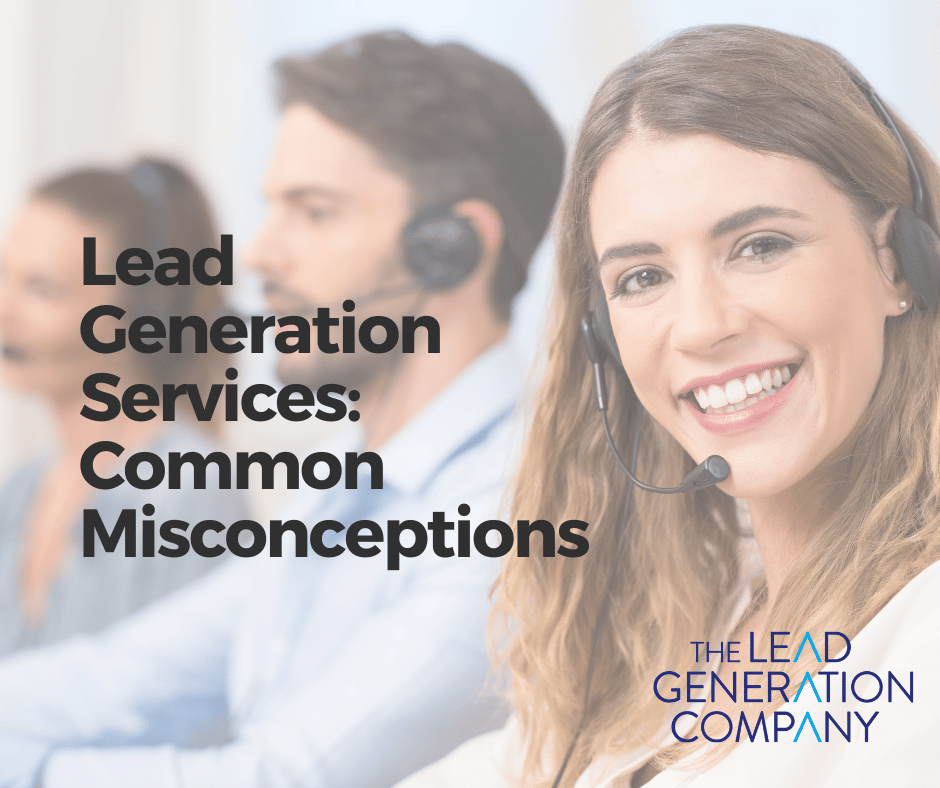Lead Generation Services: Common Misconceptions
The business of sales is always changing, particularly since the rise of the internet. While many businesses rely on lead generation to maintain a steady flow of clients, some believe that lead generation is no longer a viable practice.
So, is lead generation worth it? We’re a little biased, but… yes!
The truth is that there are a lot of misconceptions when it comes to lead generation. Today’s blog will debunk these myths, and shed some light on the reality of lead generation in 2023.
#1: Lead Generation is Something to be Switched On and Off
If you’re at a stage where you feel like your business has more than enough leads, you may naturally want to take a step back from lead generation for a while.
But lead generation is an ongoing process. It’s only really a viable marketing strategy if you’re providing your target audience with consistent attention. That’s the key to developing relationships.
That’s not to say you should be constantly barraging your audience, though. Too much communication might end up doing more harm than not communicating at all. It’s about striking a balance.
That’s why, when it comes to email marketing, scheduling emails at a certain time can be beneficial. It means that you can see how recently you communicated with your audience, track their engagement, and know exactly when you’ll next be communicating.
#2: Communication is a One-way Street
You can’t just put your business out there and immediately shut your eyes. Analysing your audience’s response is just as important as your output.
It’s about providing information to your target audience in order to educate them, and analysing their response. Their feedback could take the form of actual words, but more often than not you’ll be looking at their actions. Consider how they’re interacting with your content, if at all, and what this actually means.
Are they opening your emails, but not clicking through? Is your whitepaper getting many downloads? How many enquiries are you receiving through your website? Make sure that the marketing platform you’re using has solid analytical tools, so you can see exactly how your target audience is responding to your output.

#3: Simply Having a Website is Enough for Lead Generation
Launching your completed website is always a big step for your business, but it’s rare that you’ll be able to sit back at this stage and watch inquiries pour in. It’s vital that your website is actually offering something of value. Otherwise, even if people are visiting your website, they’ll have little reason to stick around.
Think about the first thing your audience is going to see when they land on your website. Is it immediately clear what you’re offering? If someone wants to learn more about your business, will they know how to go about this?
An effective website isn’t just a few static logos and some blurb. It should be active and offer content that’s actually relevant to your target audience.
#4: Social Media Is Ineffective for Lead Generation
Social media can be an extremely effective tool when it comes to marketing, and the same is true for lead generation. For businesses, there’s a lot more to social media than simply posting about your services. The most effective social media strategies come from thinking outside the box.
Take TikTok, for example. Some of the TikTok marketing campaigns that get the most attention and engagement are not just out of the ordinary, but borderline unhinged (yes, of course, we’re referring to Duolingo).
Don’t underestimate the power of social media marketing. Regardless of the type and size of your business, certain social media platforms will likely be effective for lead generation.
There’s a lot of competition out there, naturally. Remaining consistent is key, as well as engaging with your audience.

#5: Your Audience Doesn’t Need to Know About Your Company
It’s rare that new leads will immediately convert if they don’t have any prior knowledge of your company and what you’re offering. That’s why you shouldn’t immediately jump into a sales pitch when it comes to a new prospect. Educate them first. Provide them with something of value, whether it’s an informational video, a whitepaper, a blog, or maybe an invite to a webinar.
It doesn’t matter what you’re selling; launching into a list of reasons the prospect should pay for your product or service is far less likely to lead to conversions, compared to you taking the time to nurture the prospect by providing them with value first.
#6: Effective Lead Generation Can’t Be Tracked
Generally, marketing teams tend to spend far more time organising their leads and storing their data than they do tracking their leads. This can be extremely counterintuitive. Tracking the trends of your leads is just as vital as everything that comes before it.
Lead generation is a process, and focusing more on only certain stages in that process could effectively result in your efforts being all for nought. Analysing the trends of your leads is crucial, not least because it will allow your team to plan their next strategies.
There are a number of tools businesses can use to track their leads. At the very least, spreadsheets can be very beneficial, particularly online spreadsheets that everyone on your team can access and edit.
#7: Cold Calling is Obsolete in Lead Generation
It’s a common misconception that cold calling is obsolete. The main reason people tend to think the practice is a thing of the past is because, when they think of ‘cold calling’, they think it intrusive, artificial, and scripted.
Nowadays, far more effort is made to warm up a potential buyer, rather than simply launching into a sales pitch and hoping they’ll get a bite. The same also goes for email marketing.
It’s about educating the potential buyer, providing them with something of value, and taking on board their pain points so you can explain how what you’re selling could help their business specifically. Prior to calling a new potential buyer, it’s important to know who you’re calling and have a targeted message prepared.
Cold calling is far from obsolete. But calling someone up with no prior insights into their company and reading straight from a script? That’ll get you nowhere.

#8: All Leads Are a Good Thing for Lead Generation
For an experienced salesperson it probably goes without saying, that not every lead will result in a conversion. They’re more an opportunity at getting closer to a sale than they are a guaranteed sale.
But the process of going from a lead to an actual conversion can be time-consuming, so it’s important that you’re not wasting your time on leads that were always going to go nowhere.
The way to minimise wasted time is by having an effective qualification process. This will allow you to sift through your leads, and have an idea of which leads should be contacted as a priority and which leads can wait. Lead generation simply wouldn’t work without this level of structure. A qualification process means you’re always contacting the best leads first.
#9: Every Company Should Focus on Advertising
Only spend money on advertising if you’ve considered your content, and your content strategy, very carefully. Remember that, just like you, the people who you’re targeting with ads are likely seeing thousands of other ads every single week, and the majority of them won’t get a second glance.
But with the right copy and the right design, paid ads can be very effective. What’s important is that you start small, rather than spending a large budget on a sweeping campaign that might not end up getting many leads. It’s impossible to fully anticipate how effective a campaign will be, after all.


Ryan Whyte is a Director of The Lead Generation Company where he leads a team of B2B telemarketers to deliver high-quality leads for clients. With a strong background in campaign management and a focus on driving results, Ryan is dedicated to optimising strategies that maximise client success in B2B lead generation.



















